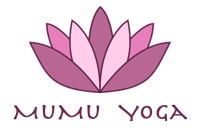 Pranayama is loosely translated as prana or breath control. The ancient yogis developed many breathing techniques to maximize the benefits of prana. Pranayama is used in yoga as a separate practice to help clear and cleanse the body and mind. It is also used in preparation for meditation, and in asana (posture work), to help maximize the benefits of the practice, and focus the mind.
Pranayama is loosely translated as prana or breath control. The ancient yogis developed many breathing techniques to maximize the benefits of prana. Pranayama is used in yoga as a separate practice to help clear and cleanse the body and mind. It is also used in preparation for meditation, and in asana (posture work), to help maximize the benefits of the practice, and focus the mind.
Breathing is so simple and so obvious we often take it for granted, ignoring the power it has to affect body, mind and spirit. With each inhalation we bring oxygen into the body and spark the transformation of nutrients into fuel. Each exhalation purges the body of carbon dioxide, a toxic waste. Breathing also affects our state of mind. It can make us excited or calm, tense or relaxed. It can make our thinking confused or clear. In the yogic tradition, air is the primary source of prana or life force, a psycho-physio-spiritual force that permeates the universe.
Ujjayi – The Breath of Victory
Ujjayi is often called the “sounding” breath or “ocean sounding” breath and has many benefits. It is helpful in regulating the breath and maintaining a focus during asana. It helps to build internal body heat and circulates prana (energy). The Nadis/energy channels and sinuses at the back of the throat are stimulated, which promotes mental clarity and focus, plus stilling the mind as one connects with the oscillating sound. It involves constricting the back of the throat while breathing to create an “ah” sound.
How to do it
1. Come into a comfortable seated position with your spine erect, or lie down on your back. Begin taking long, slow, and deep breaths through the nostrils.
2. Allow the breath to be gentle and relaxed as you slightly contract the back of your throat creating a steady hissing sound as you breathe in and out. The sound need not be forced, but it should be loud enough so that if someone came close to you they would hear it.
3. Lengthen the inhalation and the exhalation as much as possible without creating tension anywhere in your body, and allow the sound of the breath to be continuous and smooth.
To help create the proper “ah” sound, hold your hand up to your mouth and exhale as if trying to fog a mirror. Inhale the same way. Notice how you constrict the back of the throat to create the fog effect. Now close your mouth and do the same thing while breathing through the nose.
When to do it
During asana practice
Before meditation
Anytime you want to concentrate
